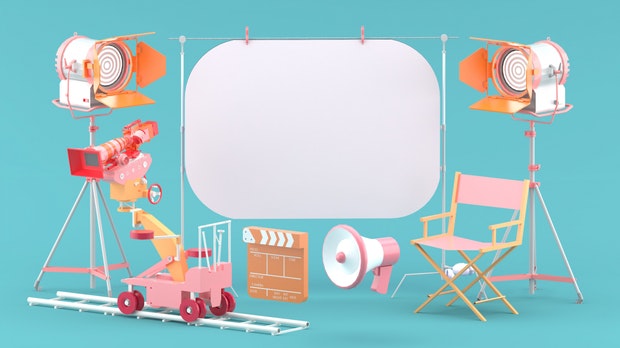It grows and grows and grows, in Europe even four times faster than other digital forms of advertising: video advertising. Marketers should use them – but they have to be able to differentiate themselves from the competition.
On the go, at home, on the smartphone, laptop, tablet. No matter where: Consumers love streaming, funny spots, tutorials, viral videos, series and films. As demand increases, so does supply. The amount of available videos is unimaginably large and Youtube is now the second largest website in the world after Google . It is becoming increasingly difficult for advertising to stand out from the mass of content and to be noticed by the audience.
The dramaturgy should inspire
Moving images thrive on stories and emotions. Brands should arouse desire and touch us emotionally. Storytelling is on everyone’s lips. Each story has its own dramaturgy, but it works a little differently in each channel. A television commercial usually follows the dramaturgy of feature films, only shortened to 30 seconds: the scenery is described, the tension rises and towards the end of the commercial we experience the dramatic climax with the high resolution. Not only almost every feature film, but also many theater plays succeed this way.
In a world in which we distribute our attention to 15 to 20 different items of content (images, videos, texts) in the news stream in a fraction of a second, a brand has to capture the viewer’s attention at the very first moment. There are two ways of doing this: The product or brand is shown right at the beginning. This at least guarantees perception. This can be an ideal approach to building awareness. However, it is then difficult to tell a really interesting story, to link a content message with the brand or product or even to arouse emotions.
The second way is to get the audience interested so that they actually want to see what follows. Here a different mechanism comes into play: You start with the climax of the story, followed by the resolution, ideally by integrating the brand seamlessly and believably narrative. This gives you real engagement and gives you the opportunity to really influence opinions and attitudes. What sounds unusual at first is not all that new. After all, crime thrillers have always worked according to this formula: you experience the climax at the beginning, the crime takes place. Then you work your way up to the resolution and the motif behind it. What happens in the first few seconds must be so interesting, exciting, amazing or extraordinary,
A famous example that basically combines both is the Unskippable Ads from Geico. On the one hand, the sender is already clear in the first three seconds. On the other hand, the films are so entertaining, the idea so strong, that you like to keep watching them for a while to see what happens next.
Hit the right note
The musical design of moving image spots plays a major role. On the one hand, the music sets the emotional context of the stories we tell. Imagine, for example, that the Hornbach spot “ You live, you remember ” had a Death Metal sound on it – the emotional effect would be different immediately.
More and more, however, sound also has the task of tearing consumers out of their deep multimedia sleep. We all know it: the television is on, but we no longer look at the screen all the time. We chat with friends on the side, surf on the tablet and still have an open browser window on the laptop. A good sound, however, makes the audience sit up and captivates the audience. Prosieben shows that it can work entirely without sound. Here, at the start and end of each advertising block, only a red background with “Advertising Start” and “Advertising End” is shown on the screen. Completely without sound. The effect is that the viewer looks up from the smartphone because he thinks the TV has switched off or is defective.
Mobile spots, on the other hand, have to work without sound, as users usually have the sound of their smartphones switched off. Studies also show that more than half of users are annoyed by automatically playing online videos with sound, especially in public spaces. So here we are completely dependent on optical stimuli to attract attention. This, too, presents creative teams with new tasks when the well-known rules of the game from moving images, print and posters are blurred and copywriters and art directors have to work hand in hand to create effective creation. Often, text is actually integrated into videos instead of being spoken, for example when Apple summarized its two-hour keynote in 107 seconds or in the spot “#weaccept ”from Airbnb.
Shorter is not always better
The right film length is a hotly debated topic. The fact is that spots are getting shorter and shorter – even digitally: Today, videos should communicate everything in three seconds. But this is too short-sighted in several ways. Because spots don’t work primarily because they’re so nice and compact, but because they’re creatively made and touch people. The “ Dream Crazy ” clip from Nike captivates the audience for a total of 126 seconds, ie longer than two minutes. The story is good because it conveys emotions. Of the ten most- watched advertising spots worldwide on Youtube in 2018, only one was shorter than a minute.
One thing is certain: Online video usage is increasing in Germany, especially among younger generations. There is no guide to the mythical viral. Rather, all aspects such as story, dramaturgy, emotions, sound and length have to work together perfectly to arouse the curiosity of the audience. What works best is always what takes the consumer’s usage situation into account and is tailored to it.
